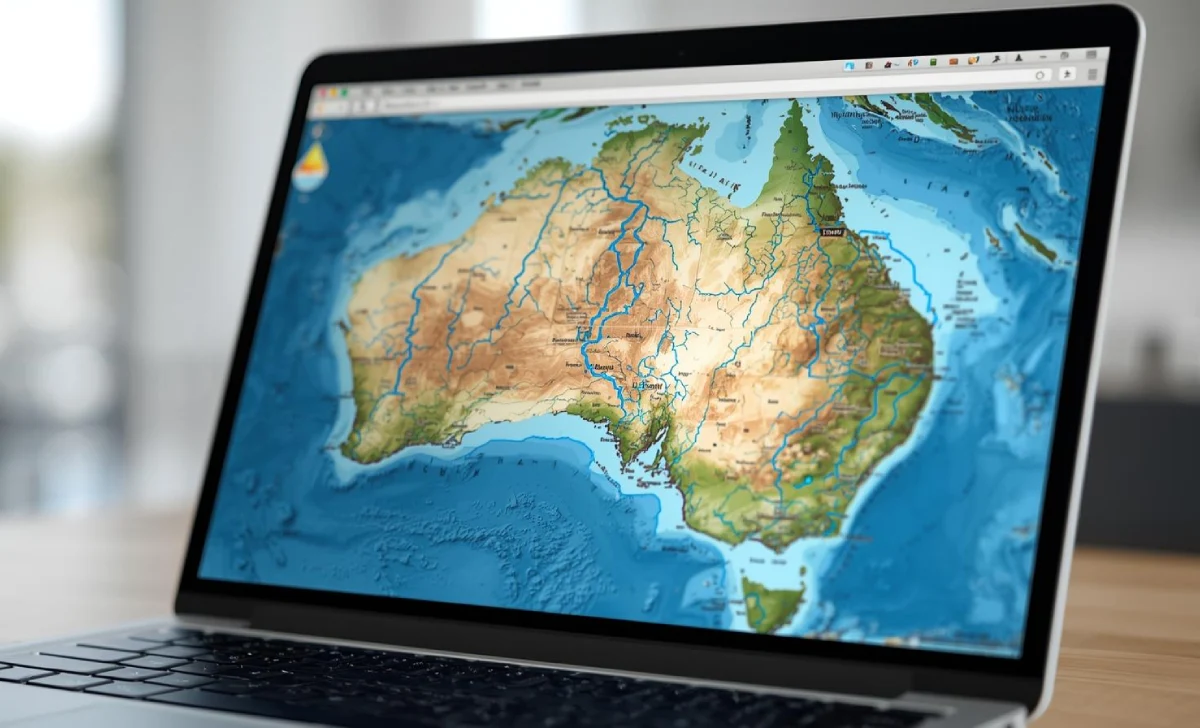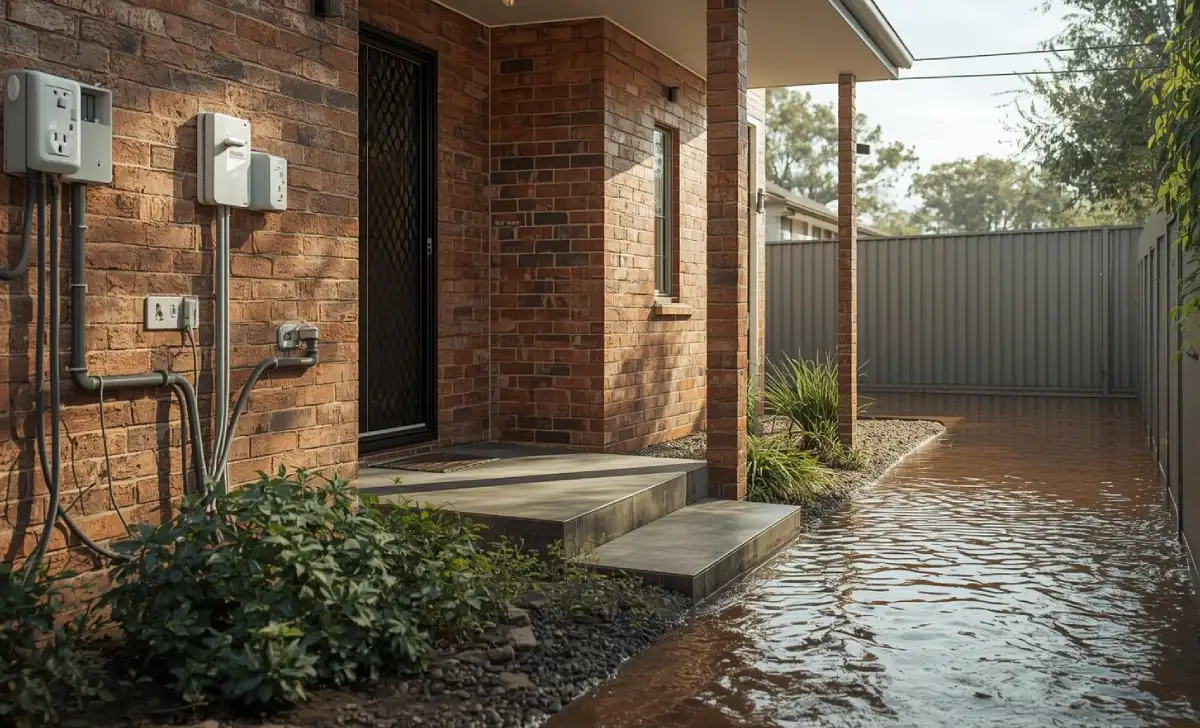You check your home insurance policy after a heavy rain warning. You assume flood damage is covered. But when water rushes through your door, you discover the truth: your policy excludes flood events entirely.
- Why Flood Cover Matters for Australian Homeowners
- What’s Standard in Home Insurance Flood Cover
- What’s Optional: When Flood Cover Isn’t Automatic
- Policy Wording Traps to Watch Out For
- How to Check If You’re Actually Covered
- Reducing Your Flood Risk and Insurance Costs
- How Flood Cover Differs from Bushfire or Storm Cover
- Protect Your Home with the Right Flood Cover
This scenario plays out across Australia every year. Many homeowners believe their standard policy protects them from floods. It often doesn’t. The gap between what you think you have and what your insurer will pay can cost you tens of thousands of dollars.
This guide explains what’s standard, what’s optional, and where policy wording can trap you. You’ll learn how to verify your flood cover home insurance in Australia and avoid nasty surprises when disaster strikes.
Why Flood Cover Matters for Australian Homeowners
Flood risk is rising across the country. Climate patterns are shifting, extreme weather events are increasing, and thousands of homes sit in known flood zones. Yet many Australians remain underinsured or completely unprotected.
Insurance companies now treat flood cover differently than they did a decade ago. After major flood events, insurers tightened definitions and separated flood cover from standard policies. This means you need to understand what you’re buying and whether it matches your actual risk.
If you live near a river, creek, or coastal area, flood cover isn’t optional. It’s essential. Without it, you’ll pay for repairs, temporary accommodation, and replacement belongings entirely out of pocket.
Australia’s Changing Climate and Flood Frequency
Major floods hit New South Wales and Queensland in 2022, affecting thousands of homes and causing billions in damage. The Insurance Council of Australia reported record claims from these events. Similar patterns emerged in 2021 and 2023.
Climate data shows increased rainfall intensity across coastal regions. Areas that rarely flooded 20 years ago now face regular inundation. Insurers respond by adjusting premiums, adding exclusions, or refusing cover altogether in high-risk postcodes.
You can’t assume past safety predicts future protection. The flood map is changing, and so are the terms insurers offer.
Areas Most at Risk of Flood Damage
Northern New South Wales and Southeast Queensland face the highest flood risk. Low-lying suburbs near rivers like the Hawkesbury, Brisbane, and Clarence experience regular flooding. Coastal areas also face storm surge and king tide inundation.
Regional towns built on floodplains carry significant risk. Places like Lismore, Maitland, and parts of Townsville have documented flood histories. Even metropolitan suburbs in Sydney, Melbourne, and Perth have flood-prone pockets.
Check your local council’s flood maps. If your property sits in a 1-in-100-year flood zone, you need specific coverage. Standard home insurance won’t protect you.

What’s Standard in Home Insurance Flood Cover
Most Australian home insurance policies don’t automatically include flood cover. You need to check your Product Disclosure Statement (PDS) to confirm what’s included. Some insurers bundle it in their comprehensive policies. Others make it optional.
Standard policies typically cover storm damage, water escape from burst pipes, and rainwater runoff. These are different from flood events. The distinction matters because insurers define flood narrowly, and that definition controls whether your claim succeeds.
Always read your PDS. Look for the word “flood” specifically. If it’s not mentioned or appears only in exclusions, you’re not covered.
Insurer Definitions of ‘Flood’
The Insurance Council of Australia defines flood as “the covering of normally dry land by water that has escaped or been released from the normal confines of a lake, river, creek, or other natural watercourse.” This definition became standard across the industry.
Your insurer must use this definition or something similar. But they can add extra conditions or exclusions around it. For example, some policies exclude tidal flooding or groundwater seepage even if the main flood definition applies.
Read your policy’s exact wording. If it says “flood as defined by the ICA,” you’re working with the standard definition. If it uses custom language, seek clarification before you need to claim.
Common Inclusions Under Standard Cover
Standard policies typically cover stormwater damage resulting from rainwater entering through broken windows or damaged roofs. They also cover water escape from internal plumbing like burst pipes or failed hot water systems.
Some policies include “water runoff” from neighbouring properties if it enters due to storm intensity. This isn’t the same as a flood. Runoff refers to surface water that has not yet formed a watercourse.
Overland flow sits in a grey area. If rainwater sheets across your property during heavy rain but doesn’t come from a river, some insurers cover it under storm damage. Others classify it as flood. Always confirm which category applies to your policy.
What’s Optional: When Flood Cover Isn’t Automatic
Many insurers sell flood cover as an optional add-on. This means your base policy explicitly excludes flood damage. You must tick a box and pay extra to include it.
This structure became common after the 2010-2011 Queensland floods. Insurers wanted to separate flood risk from standard premiums. As a result, millions of Australians hold policies that won’t pay for flood claims unless they’ve added the optional cover.
Check your policy schedule. If flood cover appears as a separate line item with its own premium, it’s optional. If it’s missing entirely, you’re not protected.
Optional Add-ons by Insurer
NRMA Insurance includes flood cover in its comprehensive home policies by default. You don’t need to add it separately. However, premiums reflect this inclusion, and high-risk properties may face higher base costs.
Allianz offers flood cover as an optional extra. You can choose to include it when you purchase or renew your policy. The cost depends on your property’s flood risk rating.
AAMI provides flood cover automatically in some states but makes it optional in others. Check your specific policy. Suncorp and Youi follow similar patterns, varying by postcode and product tier.
Don’t assume all insurers work the same way. Compare policies carefully before choosing.
Premium Impacts and Risk Ratings
Adding flood cover increases your premium. The size of the increase depends on your postcode, elevation, and proximity to waterways. Properties in high-risk zones can see premiums double or triple.
Insurers use flood risk data from government maps and private modelling. If your property sits below the 1-in-100-year flood line, expect significant premium loading. Some postcodes become uninsurable for flood at any price.
You can reduce premiums by increasing your excess. A higher excess means you pay more out of pocket during a claim, but your annual premium drops. Weigh this trade-off based on your financial situation and actual flood risk.
Policy Wording Traps to Watch Out For
Policy wording causes more claim disputes than any other factor. Insurers use specific language to define what they will and won’t pay. Small differences in wording can mean the difference between a successful claim and a rejected one.
You need to read your PDS word for word. Don’t skim. Look for exclusions, definitions, and conditions that limit your cover. If something seems unclear, call your insurer and ask for written clarification.
The most common traps involve how insurers classify water damage. They split it into categories like flood, storm, runoff, and seepage. Your claim’s outcome depends entirely on which category the damage falls into.
“Stormwater Runoff” vs “Floodwater”
Stormwater runoff means rainwater that flows over surfaces during a storm but hasn’t entered a natural watercourse. Floodwater comes from rivers, creeks, or lakes that overflow their banks.
Your policy might cover stormwater runoff under storm damage but exclude floodwater. This creates confusion when water enters your home. Where did it come from? If it came from a creek, it’s a flood. If it came from the street after heavy rain, it might be runoff.
Insurers investigate the water’s source during claims. They’ll check rainfall records, creek levels, and drainage systems. If they determine the water came from a watercourse, they’ll classify it as a flood. Without flood cover, your claim fails.
Example: A homeowner in Penrith claimed water damage after heavy rain. The insurer investigated and found the water entered from a nearby creek that overflowed. They classified it as a flood and denied the claim because the policy only covered storm damage.
Exclusions Hidden in Fine Print
Most policies exclude gradual water damage. This includes slow leaks, seepage, and rising damp. Even if flood cover is included, it won’t pay for damage that occurs over weeks or months.
Coastal erosion and tidal damage often fall outside flood definitions. If your property suffers damage from storm surge or king tides, check whether your policy covers “actions of the sea.” Many flood covers exclude tidal events.
Some policies exclude damage to retaining walls, fences, and landscaping, even when flood cover applies to the building. Others cap payouts for contents at a lower amount than building repairs. Read every exclusion listed in your PDS.
Tip: Create a checklist of exclusions from your policy. Review it annually to confirm nothing has changed. Insurers update terms at renewal, and exclusions can appear without clear notification.
How to Check If You’re Actually Covered
Don’t wait until disaster strikes to verify your coverage. Check your policy now while you have time to make changes. The process takes less than an hour and could save you from financial disaster.
Start with your policy schedule. This document lists what’s included and excluded. Look for flood cover specifically. If it’s not listed, it’s not included.
If you’re unsure, contact your insurer directly. Ask specific questions and request written confirmation of your flood coverage status.
Reviewing Your Product Disclosure Statement (PDS)
Your PDS contains every detail about your coverage. It’s usually a 50-100 page document available on your insurer’s website or sent when you purchase the policy.
Search the PDF for the word “flood.” Read every instance where it appears. Look at the definitions section first, then check the exclusions. Finally, review the claims section to understand what documentation you’ll need.
Pay attention to coverage limits. Your policy might include flood cover but cap payouts at $10,000 or $20,000. If your home needs $100,000 in repairs, you’ll cover the difference yourself.
Questions to Ask Your Insurer
Call your insurer and ask these questions. Request written answers via email for your records.
- Is flood cover included in my policy or do I need to add it separately?
- What is the exact definition of flood used in my policy?
- Are there any exclusions to flood cover that apply to my property?
- What is the maximum payout for flood damage to my building and contents?
- Does my policy cover temporary accommodation if a flood forces me to leave?
- How do you distinguish between flood damage and storm damage during claims?
If the answers don’t match what you expected, update your policy immediately. Waiting until renewal might leave you exposed during storm season.
Reducing Your Flood Risk and Insurance Costs
You can lower your flood risk through home modifications and smart planning. Reducing risk often reduces your insurance premium. It also limits damage if flooding does occur.
These changes require upfront investment but pay off over time. They also make your home more attractive to buyers if you sell in a flood-prone area.
Work with your local council to understand flood mitigation options. Many councils offer advice, grants, or subsidised improvements for homes in high-risk zones.
Home Modifications That Lower Risk
Raise electrical outlets, switches, and power points above the 1-in-100-year flood level. This prevents electrocution risk and reduces repair costs after flooding. Most electricians can complete this work in a day.
Install flood barriers or flood gates at doors and garage entries. These temporary barriers stop water from entering when flood warnings are issued. They’re removable and store flat when not needed.
Improve drainage around your property. Ensure stormwater drains away from your home’s foundation. Clean gutters regularly and extend downpipes to discharge at least two metres from the building.
Consider raising your home on stumps or installing flood vents in lower levels. These major modifications cost more but significantly reduce damage risk in severe flood zones.

Community Flood Planning and Government Resources
Check your local council’s flood maps and emergency plans. Most councils publish these online with interactive tools showing flood risk by address.
The Bureau of Meteorology provides flood warnings and river height data. Sign up for alerts in your area so you receive early warning of potential flooding.
Some state governments offer grants for flood mitigation work. Programs change regularly, so check your state’s emergency services website for current options.
Join local flood action groups if they exist in your area. These community organisations share information, coordinate responses, and lobby for improved flood infrastructure.
How Flood Cover Differs from Bushfire or Storm Cover
Natural disaster coverage varies significantly by peril type. Understanding the differences helps you build complete protection rather than assuming one policy covers everything.
Insurers separate perils because they carry different risk profiles and claim patterns. Flood, bushfire, and storm each need specific policy terms.
Comparing Natural Disaster Coverages
Bushfire cover usually appears in standard home insurance policies. It covers damage from fire, smoke, and ember attack. Most policies don’t require you to add bushfire cover separately unless you’re in an extreme risk zone.
Storm cover protects against wind damage, hail, and rain entering through storm-created openings. It’s included in comprehensive policies. Storm cover often includes lightning strikes and fallen trees.
Flood cover is the outlier. Many insurers exclude it by default or offer it as optional. The coverage only applies when water comes from overflowing waterways, not from storm intensity alone.
Earthquake cover is also typically optional. Coastal homes may need separate tsunami cover. Don’t assume “natural disaster cover” means all events are included.
Why Bundled Policies Can Be Misleading
Some insurers advertise “complete natural disaster protection.” This sounds comprehensive but often excludes flood events. The term “natural disaster” doesn’t have a legal definition in insurance.
Read the specific perils listed in your policy. If flood isn’t explicitly named, it’s not covered. Marketing language can create false confidence.
Bundled policies may also include different sub-limits for each peril. Your bushfire cover might provide full building replacement, while flood cover caps at $50,000. The bundle gives you some protection for each risk but might not fully protect you from your highest exposure.
Always verify each peril’s coverage amount and excess. Treat each natural disaster risk separately when reviewing your policy.
Insert img here: High-quality, realistic image, resolution at least 1200 x 728 pixels, showing a comparison chart of different natural disaster coverages (flood, bushfire, storm) with checkmarks and crosses indicating inclusions and exclusions.
Protect Your Home with the Right Flood Cover
Understanding flood cover in home insurance across Australia protects you from financial disaster. Don’t rely on assumptions or marketing language. Read your policy documents carefully and verify your coverage matches your actual risk.
If you live near waterways or in low-lying areas, flood cover isn’t optional. Add it to your policy today if it’s missing. If your insurer won’t offer flood cover or charges unaffordable premiums, shop around. Different insurers rate flood risk differently.
Check your policy now. Call your insurer with the questions listed above. Make changes before storm season arrives. Your future self will thank you.
Have questions about your flood cover? Share them in the comments below or talk to a licensed insurance adviser about your specific situation.






